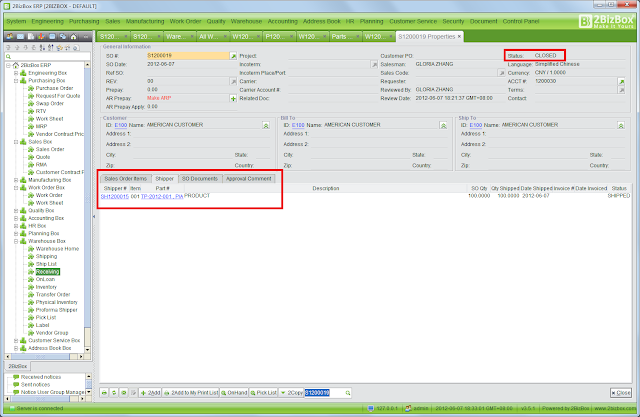Data security is
a big issue to any ERP software. When your 2BizBox ERP is implemented and ready
for daily business, have you figure out a sound security strategy to protect
and manage your system? In this article, we would like to discuss with you
about the basic security settings for 2BizBox.
1. Security in operation system level.
It’s okay for
you to download 2BizBox and install it on local host for testing. However, when
you decide to implement 2BizBox and run it for daily business, a clean and
independent server is indispensable.
We’ve received
many enquiries like: “my company is implementing 2BizBox ERP. May I install it
on a 512MB RAM computer with Window 2000 system?” Or “is it possible to install
2BizBox on my boss’ notebook?” Here’s our advice: at present, if you fail to
provide a clean, independent and well-performed server for 2BizBox
implementation, just prepare to welcome dozens of tortures in the future. We
understand that 2BizBox saves you a big amount of money for ERP Implementation,
so why not spend several hundred bucks on a new computer as server?
2BizBox ERP is
able to run in windows and Linux system. After your server’s in place, we
recommend you to install Windows Server or Linux CentOS 5. Don’t forget to set
a proper account for the server and make sure there’s no extra account left. Any
safety strategy on 2BizBox is useless if you leave your door open.
2. 2BizBox security setting
The first thing
after you install 2BizBox on the server is to set Username and Password for the
admin account. For official
operation, you must use “Default Company” instead of “Test Company”. The Admin
account owns the highest permission in system, therefore, you have to set a
secure password and memorize it.
The second step
is to strengthen safeness for other users. For example:
Encrypt
and store all users’ password, this is a default setting;
Enforce
all users to use password over certain length, generally set 6 byte and at
least set 4
byte;
Set
other password strategies, e.g. enforce users to change password regularly,
like a 30
days period
Find settings
for password management in:
2BizBox ERP -> Control Panel -> General
Setting -> Security Policy
By finishing the
above security settings, you will definitely receive complains from all
departments, e.g. for this troublesome and timed task to change password. Every
day someone will forget his password but even admin cannot regain it. The only
way is to reset the password by admin and revise it by user again. We have to
say, the seemingly inconveniency do brings safety to your system. “Hey buddy,
do me a favor. Login into the system and help me to approve an order. My
password is ******”. Doesn’t it sound familiar after you’ve been a senior staff
in the company? Any password will lose its safety as time passes. Think about
the loss caused by information leak, your elaborate drawings, product prices
and staff salaries, doesn’t it deserve a bit attention on security maintenance?
The following
image shows that an attempt login with unsatisfied length password will be
forced to change password or exit after you set the password minimum length.
3. Assign permissions for each user in 2BizBox.
About the relationship among user, role and
permission, you can read the article:
Understanding relationship
among “permission”, “role” and “user”
Permission is
complicated and different from company to company. In 2BizBox, we define
permission to each function. With such small granularity, you are able
to assign very fine-grained
permissions to each user. Though it is operable, in practical cases, there’s no
necessary to make such permission assignment because we’ve preset a few roles
according to the module distribution. With these roles integrated by certain
permissions, you can flexibly assign roles to a user in a very short time.
We would like to
kindly remind you a few special and sensitive functions like: download
drawings, check system diaries, add users, check financial reports, adjust
warehouse costs, etc. In case information leaks out due to imprecise definition,
check system diaries at the first time and make adjustment so as to obtain a
safe ERP for your enterprise.
Finally, if you
have certain knowledge in database, you can revise username and password in
default database. Create a new account, set password and revise the
mysql-ds.xml configuration files under deploy category, then 2BizBox is able to
obtain your information.





















































